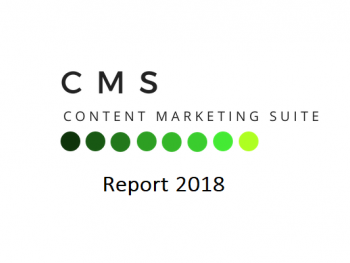Content Marketing and Native Advertising, how to make the most of them
.jpeg)
Content Marketing and Native Advertising: opposite twins?
The world of online marketing has grown exponentially over the last 15 years and has undergone important transformations starting from the terms used by the marketers themselves. If until recently, industry insiders were discussing customer media, branded content, custom content or publishing, today we are talking about Content Marketing, a term that summarises the myriad of concepts that revolve in this world. The problem exists when numerous advertisers use the term Native Advertising as a synonym for Content Marketing.
The two concepts sometimes seem interchangeable because they share the same philosophy: good marketing it should be less intrusive, based on a strategy that can give more importance to "pull" instead of "push". It is true that both are forms of sponsored communication, with content that is not persuasive, at least not in a declared way. The differences are visible in the ways, in the channels and even in the purposes. Understanding the gap between the two means giving a precise name to the future evolution of online marketing, a task that nobody can avoid in the name of a careful and precise business strategy.
What is Native Advertising?
Native Advertising is a marketing technique that consists of the use of paid content that is similar in appearance and features to the multimedia format in which they appear. With respect to the banner, the "native" ad does not have the appearance of an advertisement or a sponsored content but seems to be part of the editorial flow of that page. Very often these ads take the form of recommended content or are included in the feeds of social media such as Instagram or Facebook.
The main intention, according to Ben Kunz of Mediassociates, is to get a paid message out of the incredible confusion of standard advertising, giving it the substance of an impartial, different content and therefore more interesting and precious. Entertaining and informing readers is the purpose of Native Advertising, capturing the user's attention means pushing them to share the sponsored content in their social media channels, to make that particular video, announcement or infographic. Fluid and captivating native advertising is rarely ignored or perceived as annoying. These are the reasons that push the user to confidently approach the brand, without blocking or ignoring that ad as is usually done with a classic banner.
What is Content Marketing?
Content Marketing is not a single asset but it is tactics, discipline, and strategy. Native advertising needs exceptional and relevant content. Behind every announcement a qualitatively flawless text must hide that can perform the miracle of attainingcustomer loyalty. Content Marketing does just that because it is a technique of strategic marketing that creates and distributes coherent and valuable content aimed at winning over a well-defined audience. It's a "pull" strategy because, instead of working and pushing an ad, it does the exact opposite: to gain the public's attention it focuses on involving it.
How to take advantage both
Employing both strategies is essential to increase the potential of each. For example, native advertising can be used to broaden the objectives achieved through traditional communication, diverting a greater share of potential customers to the company website. Giving an all-encompassing recipe is impossible because the numerous combinations between the two can lead to the development of different successful strategies. CMS Recommend, the innovative service provided by MelaScrivi, video carriers, infographics and articles on top-level websites. In this way, while the visitor reads the information of interest, they will be pointed towards your content for further information. Try it now!


.jpeg)


